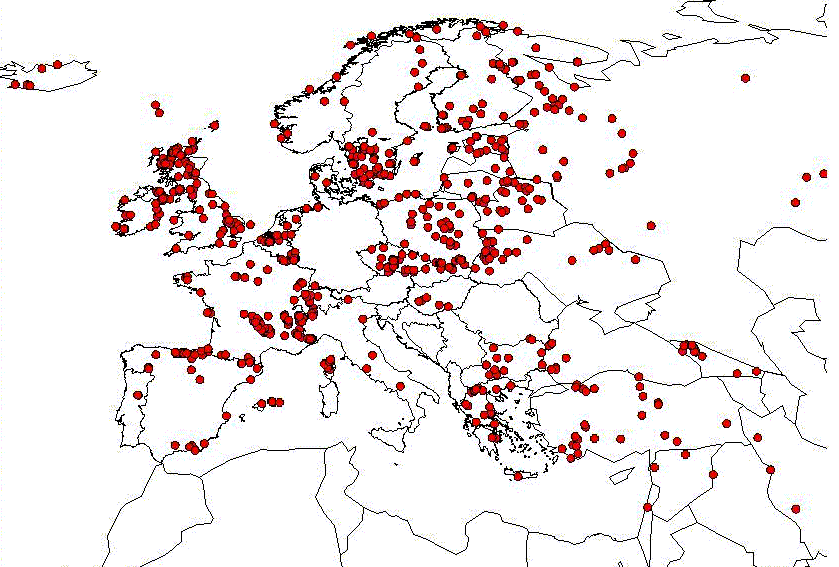
Please remember that you may subscribe to the "EPD forum" by sending
an e-mail message to:
(with the sole contents of this message: SUBSCRIBE EPD-L <your full name>)
During the past year, 70 new sites have been included in the database bringing the total to 874 sites (670 unrestricted, 204 restricted). Several sites (from Lithuania and Bulgaria) have become unrestricted during the last year according to the wish of their authors. The unrestricted data represent more than 3/4 of the EPD data. Following the directives in the EPD protocol, during April 1999, authors of restricted sites contributed to the EPD before 30 March 1996, are being contacted by the database manager. The contributors (30) of restricted data (132) are being informed that more than three years have elapsed since submitting their data and that unless they indicate within a defined period that they wish to continue with the restrictions, the data will become unrestricted.

An age/depth model was applied to most of the new sites. New chronologies have also been established for already existing pollen records. Thus, 483 sites have now chronologies. This means that almost half of the sites are still without one. One should remind that these chronologies are not unique and "cast in stone" in the database but can be changed/improved by users. The database structure is able to handle several chronologies with specific reference to the authors of each chronology, the control points selected and the interpolation method used to build the age/depth model …More records will be used in projects and more accurate will be the developed chronologies.
Reports on the status of the various
regions covered by the EPD
during the past year and predictions
for the coming year.
The pattern of data contribution falls into several distinct categories:
1) New data have been contributed but more is still available. This is the case with Poland (5 sites contributed this year but some 15 sites are potentially available), Switzerland and Spain. The French initiative to produce palaeovegetation maps has led to the activation of interest by a number of groups. This could potentially lead to several 10’s of sites being added in the next two years.
2) New data are in the process of being contributed. This is the case with The Netherlands, Portugal and Germany. In the latter case data has been collected in Bonn and is in Tilia format for the sites: Georgenfeld, Krumpa, Guelpe/Havel, Wachel/Beverstedt, Görbelmoos/Gilching, Holzmaar/Eifel, Meerfelder Maar/Eifel, Bindersee and Langer Filz. Data are available, but not yet in Tilia format for the sites: Tegelner See/Berlin, Wetterau, Rheinland and Ammersee.
3) Data are available for contribution but these are old sites where the counts are on paper sheets and some organization is needed to get them into digital form. This is the case with Fennoscandia and Great Britain. It is noticeable that the coverage in the British Isles is already much denser than anywhere else and so the need for new sites is less acute. In the case of some Russian material the necessary computing facilities are lacking.
4) New data are potentially available but have not yet been published or are waiting for 14C dates. This is the case with the Baltic States. In some cases the barrier here is a financial one, as in the case of Bulgaria.
5) Data is known to exist but the relevant people need to be contacted and encouraged. This is the case with Austria, Italy, Slovakia, Slovenia, Romania and Greece.